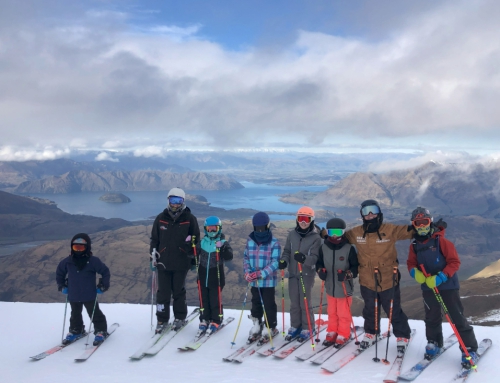Interski 2023: Top Takeaways from Austria’s Use of Slope Angles
Held every four years, Interski brings instructors together from around the world. The event offers a valuable educational opportunity for snowsports educators to share their innovations and core beliefs. It gives PSIA-AASI, through its national team, a chance to compare the American Teaching System with the educational approaches of other countries and bring home ideas that help PSIA-AASI members improve and evolve.
Here, PSIA Team member Dusty Dyar shares his takeaways from Austria’s workshop on matching each student’s ability with different slopes angles.
Top Takeaways:
- In my time with Austria, I observed how they create specific progressions in order to develop skills. We were working on short-radius carved turns, so our clinic leaders built a tipping/edging progression from basic carved arcs to fall-line short-radius arcs.
- In this progression, I learned that the use of specific levels of terrain is used to complement the progression of activities. In this case, the pitch of the hill was the main driving factor. The clinic leaders kept moving the group around the mountain to find the right pitch for the easiest application of the task. They wanted the terrain to manage speed so the student could focus on the task without the need for speed control. Pitch is increased as the student gains skills and becomes more proficient, which increases speed and ski performance.
- Finally, Austria provides different skill-building activities to use when appropriate with the ability of their students.
The intentional use of slope angle is unique as it allows students to keep their speed down so they can focus on the activity – while all tasks are started and performed from a middle flexed position.
Doing all the activities with flexion in the ankles, knees, and hips allows for more range of motion to develop skills.
Using the consistency of the technical elements with the management of slope selection can influence an instructor’s teaching and technical skills. The terrain and drill choices align with the instructor’s need to manage information, activities, terrain and pacing. Understanding the movements and ski performance addresses the technical skills.







